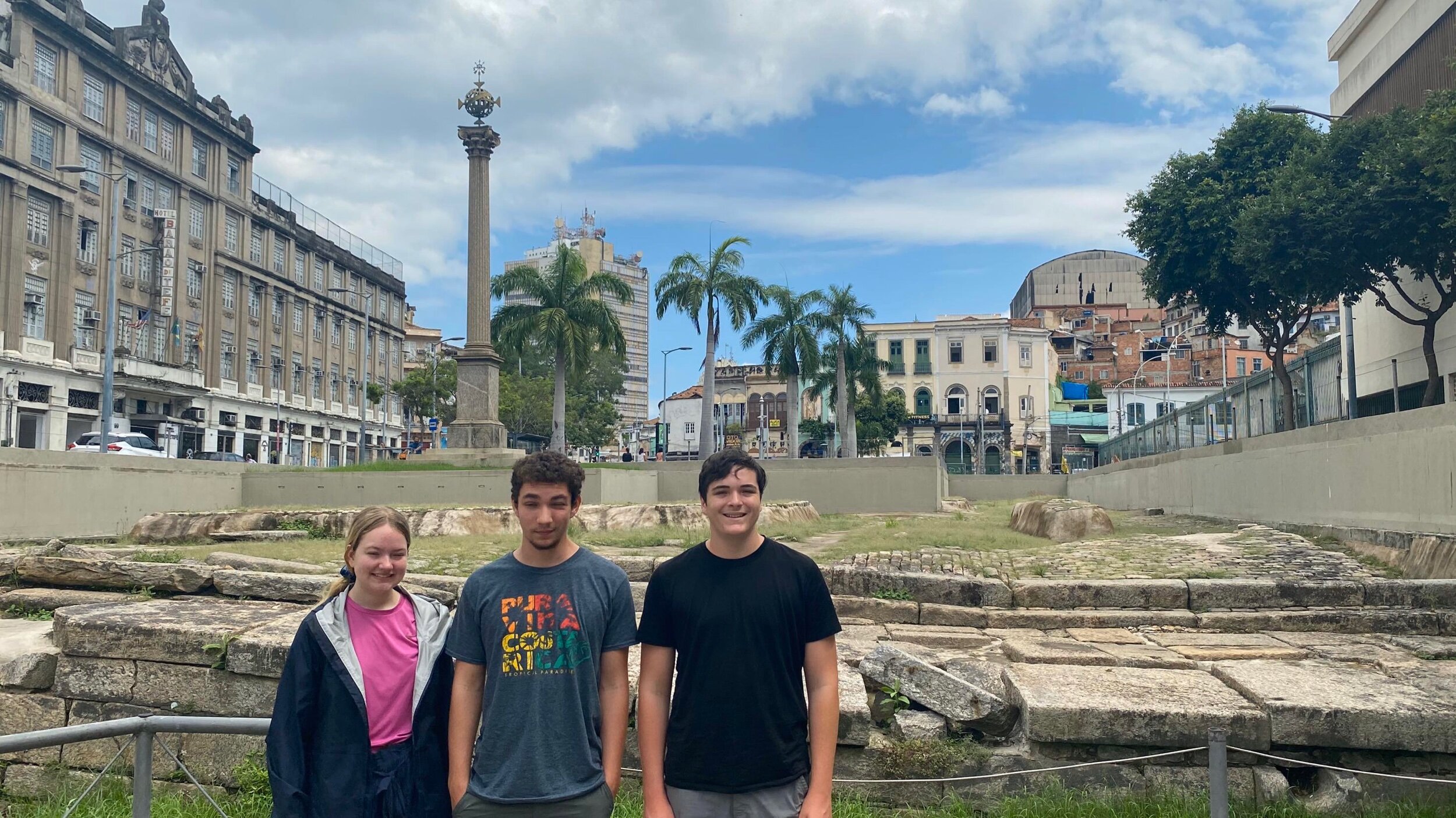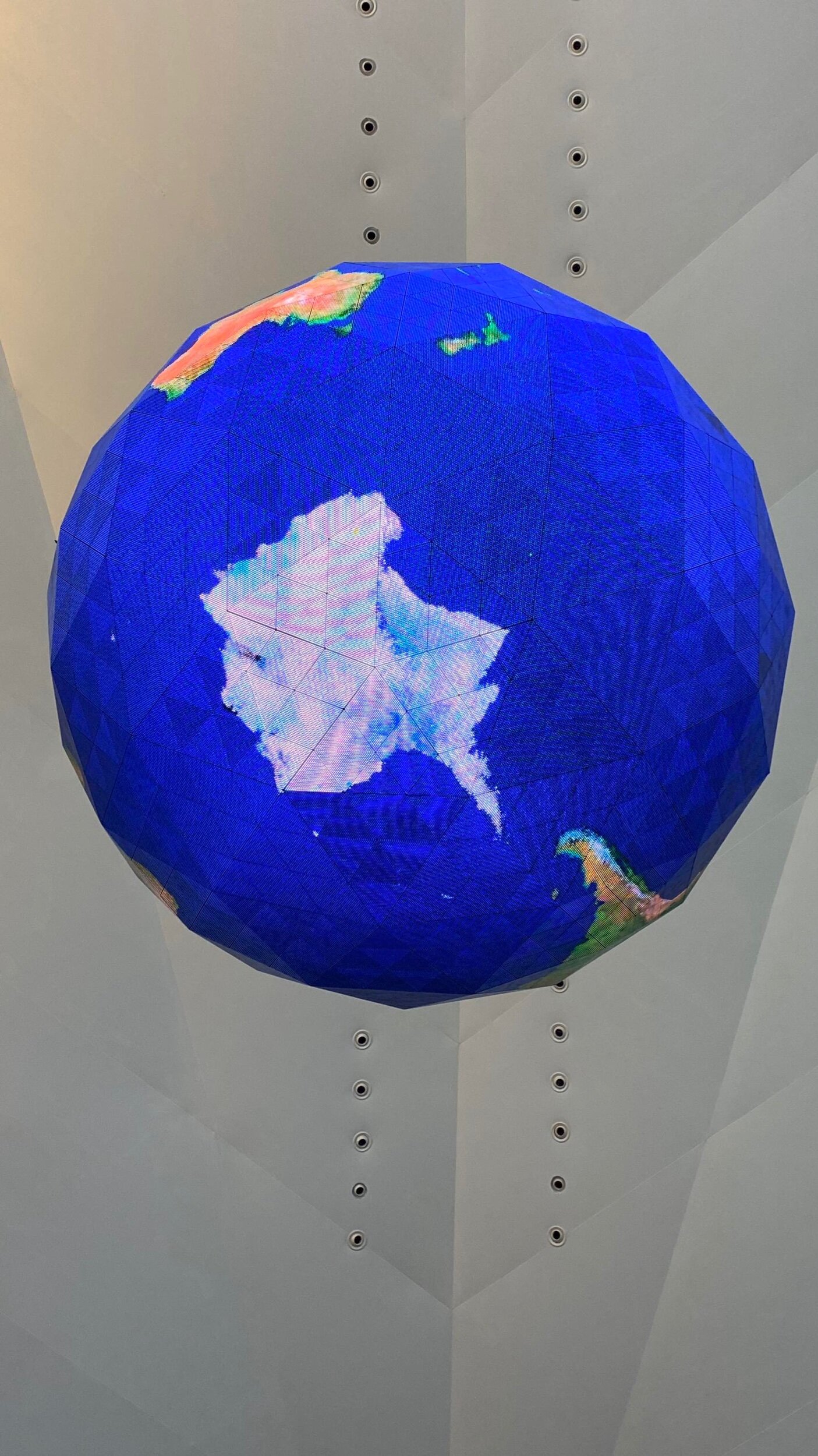3-3-20 - Museum of Tomorrow
/We wake to find that the rain has finally ceased its relentless pounding on Rio. With Big Sauce Tours John back in the states, Kyle is forced to take over the day planning for the rest of Rio. Certainly, he will need to make a better showing than yesterday where the biggest accomplishment of the day was finding the correct entry door to order Dominos.
In scanning the top attractions in Rio, Kyle finds that our one day tour on steroids two days ago hit almost every one of them on the list. The only thing left is that looks mildly interesting is the Rio Botanical Gardens. Having been to the Amazon Rainforest in Ecuador and Monteverde Cloud Forest in Costa Rica, it will be harder to muster enough excitement for a regular botanical gardens but Kyle knows he will get all sorts of slack if we just sit in the apartment all day when the sun is shining.
Kyle is talking to Leanne when she tells him that the heavy rains in Rio have caused mudslides with 32 people dead, dozens more unaccounted for and 5,000 people displaced from their homes. The city is warning people not to go out in affected areas with further mudslides expected. 150 people will have died by the end of the week. Experts says that global warming is contributing to the more “extreme rainfall” events that Brazil is experiencing because the warmer atmosphere causes more evaporation making more water available for precipitation. Another example we have witnessed first-hand about the damaging effects we are having on the environment and its repercussions on humankind. Recalling the fatal landslides on the Inca Trail in Peru the the clan just barely missed by a few hours, moving ground isn’t something to be tempting.
Given we were on the fence about the Botanical Gardens to start with, the prospect of being buried in a mudslide while visiting it puts the final nail in the BG coffin. Luckily for Kyle, Big Sauce Tours comes to the rescue as John provides a plan for the day. Rio Harbor area is a UNESCO World Heritage Site but it turns out there is another UNESCO site tucked away across the city by the port area. Near there is the Museum of Tomorrow. Done – Kyle has a plan thanks to John once again.
UNESCO’s Valongo Wharf archeological site was first built in 1811 and operated as the main landing and trading of enslaved Africans until 1831. During this 20 year period, an estimated 1 million slaves landed at Valongo. The wharf was repurposed for other uses after slave trade was banned and yet finally abandoned in 1911. The site was re-discovered and excavated in 2011 earning the UNESCO designation in 2017.
Rio has reputation as being unsafe for tourists at least in certain areas. Our Airbnb is in a safe neighborhood but we are venturing across town to unknown parts. The UNESCO site is only about a 10 – 15 walk from the Museum of Tomorrow. The Museum is built on the waterfront at the port; an area which Brazil had invested heavily in as a revitalization project for the 2016 Summer Olympic Games. The UNESCO site is a close enough walk that we should be ok from a safety perspective.
That notion lasts all of 5 seconds after getting dropped off by the Uber who beats it the hell out there before we can jump back in. We find ourselves standing in front of a burned out tenement building eliciting looks from locals. Kyle’s guessing that they don’t get many tourists visiting the Valongo Wharf archeological site. As we look across to it, we can understand why. We are expecting this grand newly excavated wharf but the site only consists of an area of rocks forming a floor with no real discernible shape. There are a few placards taped on a wall with some background information. That’s it. No museum with the history and importance of the site. UNESCO sites are a huge deal for countries and cities and they usually invest a lot into them and market the heck of them but not here. Kyle is guessing the UNESCO guy in charge of designating this site never actually came to see it.
Kyle quickly puts a check for the site in his UNSESCO app bring the total sites visited on the trip to 68 and now it’s time to make our exit. There is a nary a taxi to be found in this part of town so we are going to have to walk the 15 minutes to the Museum of Tomorrow. In terms of safety, we are feeling uncomfortably safe and to be fair we’re not talking about favela unsafe. Favelas are towns on the outskirts of Rio which come into being when squatters occupy vacant land and construct homes of salvaged or stolen material. Tourists getting lost and ending up in Rio’s favelas without an armed bodyguard are summarily shot and killed on the spot. Leanne will be piping upset if something happens on the one day with venture out without her there.
We safely walk the distance to the museum without incident. It certainly helps that there are 4 of us and Justin and Corey are as tall or taller than Kyle. Part of it is that when you are repeatedly told how dangerous something is, you expect the worst but luckily, the worst doesn’t find us. Thank you God for your protection today.
The Museum of Tomorrow (Museu do Amanha) is a science museum designed by Spanish neofuturistic architect Santiago Calatrava and built on the waterfront. The building itself absolutely looks like something from a neofuturistic period. Kyle can’t even describe it so you’ll to see the pictures below. It was opened in 2015 in advance of the Olympic Games.
The interior is just as cutting edge and modern as the exterior. A giant globe hangs from a three-story high ceiling that is illuminated a glowing color and spinning about. The museum is structured with 5 main areas: Cosmos, Earth, Anthropocene, Tomorrow and US via a number of experiments and experiences. The museum mixes science with an innovative design to focus on sustainable cities and an ecological world.
For Cosmos, we lay down and watch a 360 degree movie on the dome that tells the story of the universe but it is only in Portuguese so we are left ponder the mysteries of the universe. We study the faces of the locals to see if the mystery of the universe that was revealed during the move has moved them to tears but find that not to be the case.
The Earth exhibit ponders the question of who we are? The dramatic answer: we are matter, life and thought. Hmmm…we’ll need to reflect on that one. The exhibit is shaped like a square with 4 different two story walls containing about 100 pictures on each side. The pictures are full color ones of all the places of natural beauty on the earth. Kyle actually goes through all 400 pictures to see how many places we have been. While we’ve logged a visit to a good number of them, it is abundantly clear that there is still so much of the world still to be explored.
Inside the square, there are about 30 columns that have 4 sides and pictures on each side centered on different themes such as culture, family, city, religion, history, language. Each column has pictures from places all over the world. We repeat the same exercise seeing which places we’ve been to, are planning to go to and which will have to be left for future world tours. This was one of the coolest exhibits we’ve seen on the trip, totally awesome. We probably spent 2-3 hours just on this one exhibit.
Next was the Anthropocene and we are in the age of the Human. Raise your hand if you know the meaning of this word. If you do, we’re impressed. Anthropocene means relating to or denoting the current geological age viewed as the period during which human activity has been the dominant influence on climate and the environment. And “dominant influence” not being in a good way either.
The exhibit showed are sorts of data, facts and pictures about the negative impact we (humans) are having on the environment. This exhibit hit home particularly hard for us with all the firsthand impacts on the environment we’ve witnessed first-hand on our trip. Halong Bay in Vietnam full of floating plastic bottles, emissions from China, record high temperatures in Antarctica, oil drilling in the Amazon in Ecuador, extreme rainfall in Brazil, glacial melting in Patagonia and Antarctica, polluted waters in Nepal and trash burning in Indonesia. Just to name a few.
The Tomorrow and Us exhibit wrap up posing the question of what kind of world we want for tomorrow and our future generations. Kyle declares it one of the top museums of the entire trip and a can’t miss if you ever find yourself in Rio.
We attempt to find a church as our last item of the day but get a little lost and by the time we find the church, it has closed so we head back to the apartment. We are fairly wiped out from the day and ordering Uber Eats and watching more episodes of the I-Land sounds like the perfect plan for the evening.







































